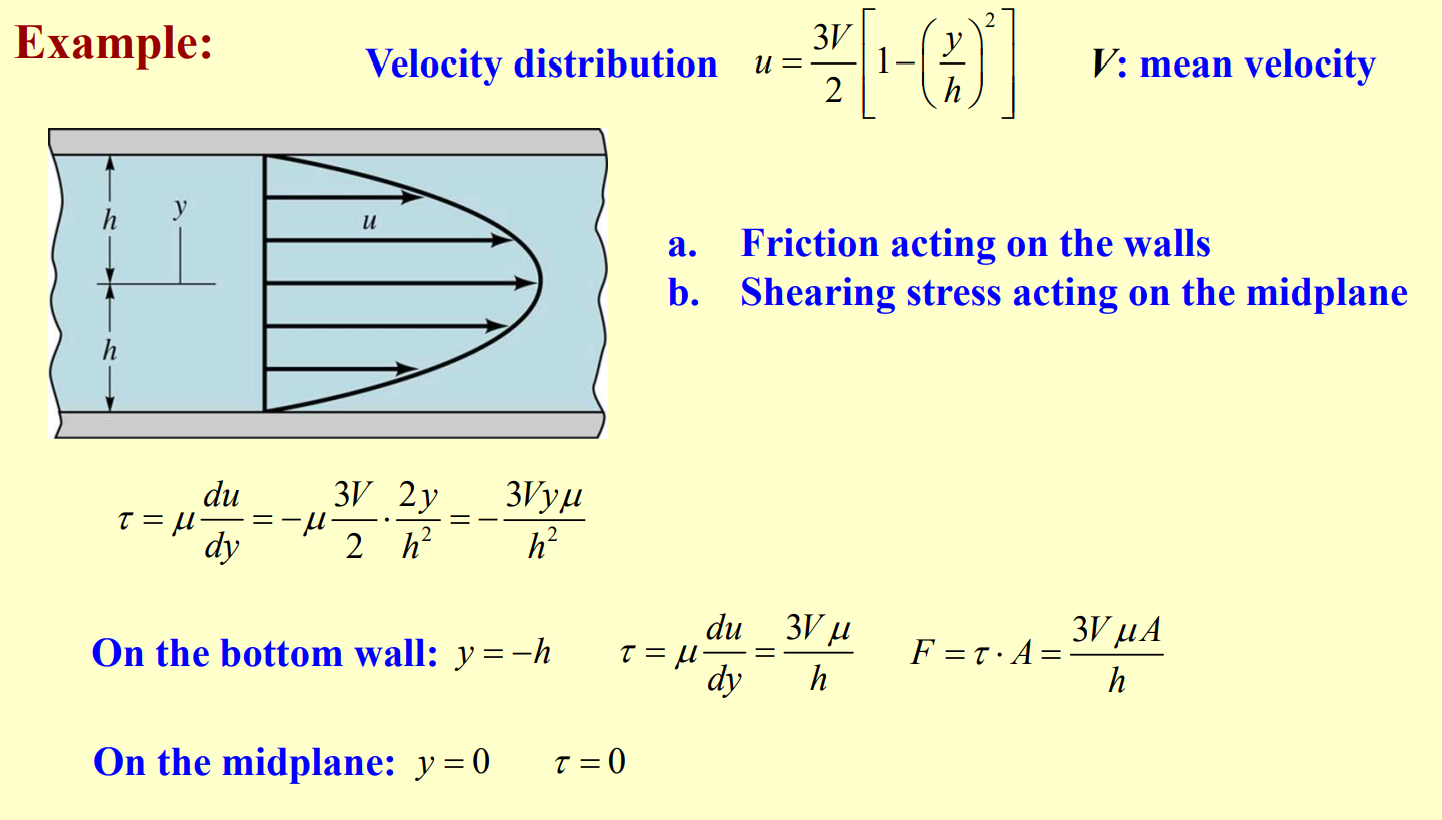Viscosity is an additional property, aside from density and mass, that describes the “fluidity” of the fluid.
Two-Plate Experiment
Consider a hypothetical experiment in which a material is placed between two wide parallel plates. The bottom plate is rigidly fixed, but the upper plate is free to move.
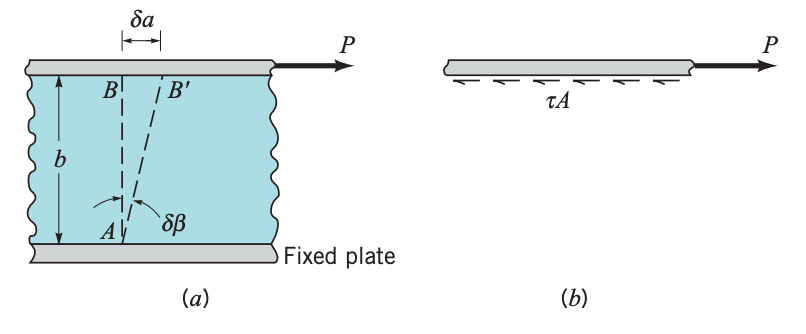
If a solid, such as steel, were placed between two plates and loaded with force as shown:
- The top plate would be displaced through some small distance, (assuming the solid was mechanically attached to the plates).
- The vertical line would be rotated through the small angle, , to the new position .
- Note that to resist the applied force, , a shearing stress, , would be developed at the plate-material interface, and for equilibrium to occur, where is the effective upper plate area.
What happens if the solid is replaced with a fluid such as water? We would immediately notice a major difference. When the force is applied to the upper plate, it will move continuously with a velocity as illustrated below.
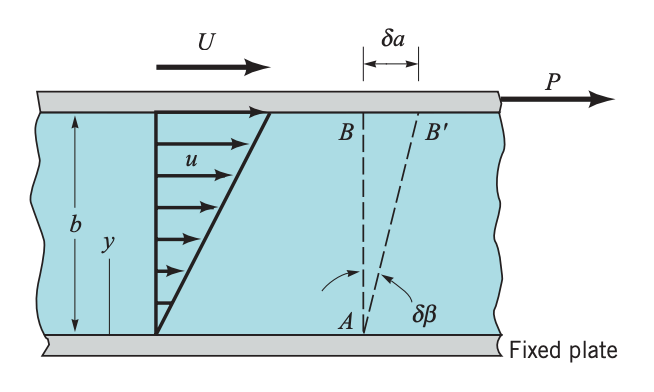
This behavior is the consistent with the definition of a fluid – that is, if a shearing stress is applied to a fluid it will deform continuously. A closer inspection of the fluid motion between the plates would reveal that the fluid in contact with the upper plate moves with the plate velocity, , and the fluid in contact with the bottom fixed plate has zero velocity.
The fluid between the two plates moves with velocity that varies linearly with , as illustrated above. Thus, a velocity gradient, , is developed in the fluid between the plates. In this particular case, the velocity gradient is constant since .
No-Slip Condition
The experimental observation that fluid “sticks” to solid boundaries is a very important one in fluid mechanics and is called the no-slip condition. All fluids satisfy this condition.
Viscosity Derivation
As the force is applied, the velocity of the upper plate increases over time and eventually reaches a steady-state terminal velocity, .
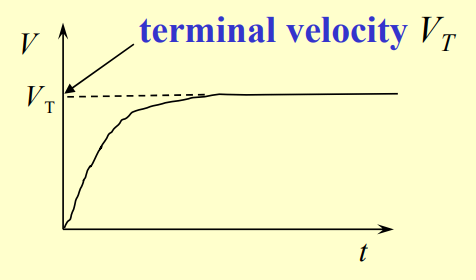
A shear stress is developed to oppose the applied force , since the layers close to the top plate want to move, but the bottom layers don’t want to move. This shear stress is defined as:
where is the applied force and is the area of the upper plate.

The velocity distribution of the fluid follows a linear gradient from the stationary lower plate to the moving upper plate, given by . Since the velocity profile is linear, the terminal velocity can be given as
where is the gap between the plates.
The terminal velocity is proportional to the applied force, and thus also proportional to :
which means that the velocity gradient is also proportional to the force
which means that or
where is the dynamic viscosity or absolute viscosity of the fluid
Any fluid that satisfies the above is a Newtonian fluid.
Dimensions
Shear stress is which is equivalent to . We also know that the velocity gradient tells us how velocity changes with respect to distance, so it has units:
Thus, re-arranging for would give
which would have SI units of .
Kinematic Viscosity
Kinematic viscosity is combines viscosity with density, and is defined as:
which has units of
Rate of Shearing Strain
Another quantity we sometimes use is the rate of shearing strain:
which signifies the rate at which is changing.
Physical Intuition
We can think about viscosity as a measure of momentum transfer in a fluid, or how strongly fluid layers resist relative motion.
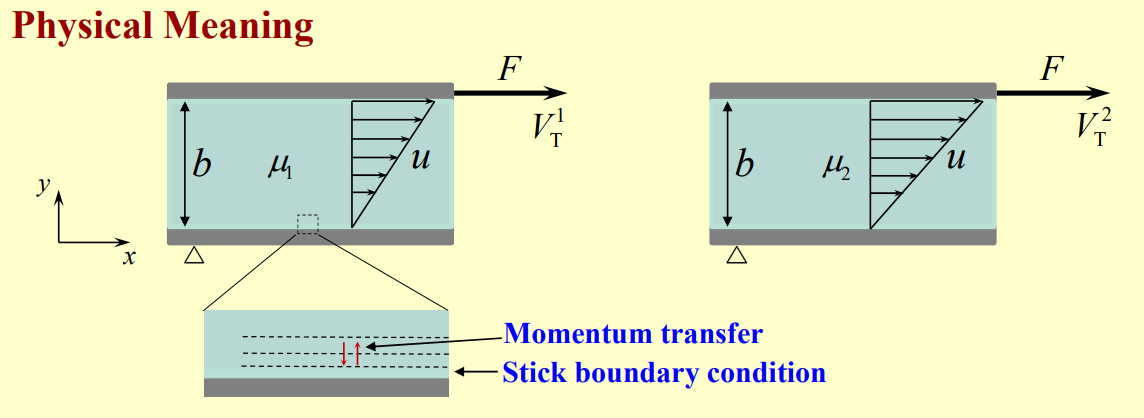
If the momentum transfer is strong within the fluid, the bottom surface will affect the fluid particles far away from it, thus reducing the terminal velocity of the top surface.
Consider two fluids where the momentum transfer of fluid 1 is stronger than that of fluid 2. This means that
Using for both, we see that this means . Therefore, higher viscosity = better momentum transfer between fluid layers. This makes sense, since a solid, with infinitely high viscosity, transfer momentum perfectly.
Example
